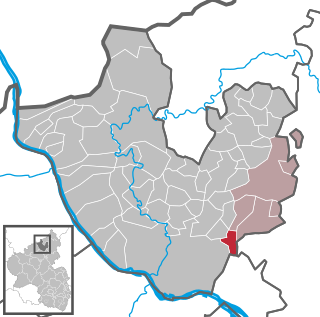
Count John VI of Nassau-Dillenburg was the second son of William the Rich and the younger brother of William the Silent. He has a special place in the history of the Netherlands because he is the male-line forefather of the House of Orange.
Gerlach is a male forename of Germanic origin, variations of which exist in many Germanic and Romance languages. Like many other early Germanic names, it is dithematic, consisting of two meaningful constituents put together. In this case, those constituents are ger and /la:k /. The meaning of the name is thus 'spear thrower'.
It became a surname, and a source from which other surnames have been derived, as well.

The County of Isenburg was a region of Germany located in southern present-day Hesse, located in territories north and south of Frankfurt. The states of Isenburg emerged from the Niederlahngau, which partitioned in 1137 into Isenburg-Isenburg and Isenburg-Limburg-Covern. These countships were partitioned between themselves many times over the next 700 years.

Isenburg-Büdingen was a County of southern Hesse, Germany, located in Büdingen. It was originally a part of the County of Isenburg.
Nieder-Isenburg was a small mediaeval county in northern Rhineland-Palatinate, Germany. It was located to the east of the town of Neuwied, due north of Vallendar.
Isenburg-Kempenich was the name of a state of the Holy Roman Empire, based around Kempenich in modern Rhineland-Palatinate, Germany.

Neu-Isenburg is a town in Germany, located in the Offenbach district of Hesse. It is part of the Frankfurt Rhein-Main urban area and has a population of 38,204 (2020). The town is known nowadays mainly for its regionally used shopping centre, the Isenburg-Zentrum (IZ), the Hugenottenhalle, the Hotel Kempinski Frankfurt, the Autokino Gravenbruch, the Sportpark, the Waldschwimmbad and its location near Frankfurt Airport.
John of Isenburg-Grenzau was the Count of Isenburg-Grenzau from 1554 until 1556, and the Archbishop-Elector of Trier from 1547 until 1556.

Salentin IX of Isenburg-Grenzau (c. 1532–1610) was the Archbishop-Elector of Cologne as "Salentin of Isenburg" from 1567 until 1577, the Bishop of Paderborn from 1574 until 1577, and the Count of Isenburg-Grenzau from 1577 to 1610.
Isenburg-Grenzau was the name of several states of the Holy Roman Empire, seated in the Lordship of Grenzau, in modern Rhineland-Palatinate, Germany. The first state called Isenburg-Grenzau existed 1158–1290; the second 1341–1439; and the third 1502–1664.

Birstein is a municipality on the northeastern edge of the Main-Kinzig-Kreis in Hesse, Germany with approximately 6,600 inhabitants. It was the home of the former principality of Isenburg-Birstein.

Isenburg is a municipality in the district of Neuwied, in Rhineland-Palatinate, Germany.
Isenburg-Arnfels was the name of a state of the Holy Roman Empire, located in the Bad Hönningen area in modern Rhineland-Palatinate, Germany.
Gerlach I of Isenburg-Arnfels was the Count of Isenburg-Arnfels from 1286 (1287) until 1303.
Ferdinand Maximilian I of Isenburg-Wächtersbach was a German count of Isenburg-Wächtersbach from 1673 to 1703, and was the first of that county,, and the father of Ferdinand Maximilian II of Isenburg-Wächtersbach. The county lasted from 1673 to 1806, until it was mediated to Isenburg.
Louis Maximilian II of Isenburg-Wächtersbach was a German count, and the last count of Isenburg-Wächtersbach in the central Holy Roman Empire. His countship lasted from 1805 to 1806, and ended when it was mediated to Isenberg. He was the son of Louis Maximilian I of Isenburg-Wächtersbach, and a descendant of Ferdinand Maximilian I of Isenburg-Wächtersbach.

Wolfgang Ernst I, Count of Isenburg-Büdingen was a German count of the House of Isenburg. He was count of Isenburg-Birstein from 1596 to 1633, after violently seizing power from Henry of Isenburg-Rönneburg.
This page is based on this
Wikipedia article Text is available under the
CC BY-SA 4.0 license; additional terms may apply.
Images, videos and audio are available under their respective licenses.







